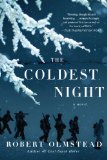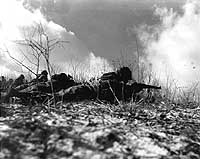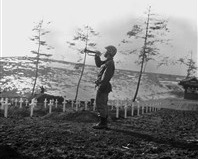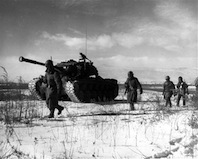Summary | Excerpt | Reviews | Beyond the Book | Read-Alikes | Genres & Themes | Author Bio

Critics' Opinion:
Readers' Opinion:
First Published:
Apr 2012, 304 pages
Paperback:
Apr 2013, 320 pages
 Book Reviewed by:
Book Reviewed by:
Mark James
Buy This Book
This article relates to The Coldest Night
Korea suffered under a brutal Japanese occupation from 1910 to 1945. After Japan's defeat in World War II, Korea was divided along the 38th Parallel, with South Korea falling under the jurisdiction of the United States, and North Korea under the Soviet Union. Reunification was the stated ultimate goal, but when North Korea attacked South Korea on June 25, 1950, the United Nations created an army to repel the invaders with the US military representing 88% of the 340,000 UN troops. According to the Naval History and Heritage website:
Throughout the summer of 1950, the U.S. and the other involved United Nations' states scrambled to contain North Korea's fast-moving army, assemble the forces necessary to defeat it and simultaneously begin to respond to what was seen as a global military challenge from the Communist world. In mid-September 1950 a daring amphibious invasion at Inchon fractured the North Korean war machine. In the following two months UN armies pushed swiftly through North Korea.
The UN army forced the North Koreans back, close to the Chinese border, but as they approached the Yalu River, the Chinese People's Volunteer Army attacked and surrounded a contingent of UN troops, which consisted mostly of U.S. Marines, soldiers, and British Royal Marines at the Chosin Reservoir (now known by its Korean name, Lake Changjin).
 |
 |
 |
The UN supply lines were already stretched thin, and the soldiers (all from the USA other than one unit of British Marines and another of Korean soldiers) were forced to fight their way out of the area in sub-zero temperatures. It would appear an ignominious retreat for the USA, a nation that had been integral to defeating the Axis powers just five years earlier, but, according to the essay "The Korean War, an Introduction" by Admiral James L. Holloway, III USN (Ret), "The Chinese offensive came as a surprise to General MacArthur and his field commanders... China had been able to infiltrate more than 200,000 regular army troops... without detection by UN intelligence..." Officially the battle lasted from November 27 to December 13, 1950, and it is estimated that approximately 30,000 UN forces (nicknamed "the Chosin few") were attacked by about 200,000 Chinese. UN troops fought their way to the port city of Hungnam, where they were evacuated.
Though the exact number of casualties isn't known, the UN estimates that approximately 50,000 people (both military and civilian) lost their lives in that 17-day period. According to the Korean War Educator, for that single conflict, the United States awarded 17 Congressional Medals of Honor. Olmstead brings history to life as Henry Childs, a young marine who enters the war just after the Inchon assault, is his unit's lone survivor and is one of the 4,600 Americans wounded (a further 1,029 were killed, almost 5,000 were reported missing and over 7,000 were listed as "non-battle casualties").
For more information on the Korean War and the Battle of the Chosin Reservoir, please visit the U.S. Naval History and Heritage website, or the U.S. Army Center of Military History website. You can also read poetry written by soldiers of the Battle of the Chosin Reservoir at http://chosinreservoir.com/poems.
Click on the video below to hear first-hand accounts of the sub-zero conditions in Chosin and to see footage of US soldiers in action.
Left: Marines on the firing line near Yudam-ni, Nov. 27, 1950; Official U.S. Marine Corps Photograph, from the "All Hands" collection at the Naval Historical Center
Middle: Cpl. C. Price plays "Taps" over the graves of fallen Leathernecks during memorial services at Hungnam, Korea, following the division's break-out from Chosin Reservoir, Dec. 13, 1950. DoD Photo by Cpl. W.T. Wolfe, USMC.
Right: Troops of the 1st Marine Division move through Chinese lines, photo by Cpl. Peter McDonald, USMC
Filed under People, Eras & Events
![]() This "beyond the book article" relates to The Coldest Night. It originally ran in April 2012 and has been updated for the
April 2013 paperback edition.
Go to magazine.
This "beyond the book article" relates to The Coldest Night. It originally ran in April 2012 and has been updated for the
April 2013 paperback edition.
Go to magazine.





The Funeral Cryer by Wenyan Lu
Debut novelist Wenyan Lu brings us this witty yet profound story about one woman's midlife reawakening in contemporary rural China.
Your guide toexceptional books
BookBrowse seeks out and recommends the best in contemporary fiction and nonfiction—books that not only engage and entertain but also deepen our understanding of ourselves and the world around us.